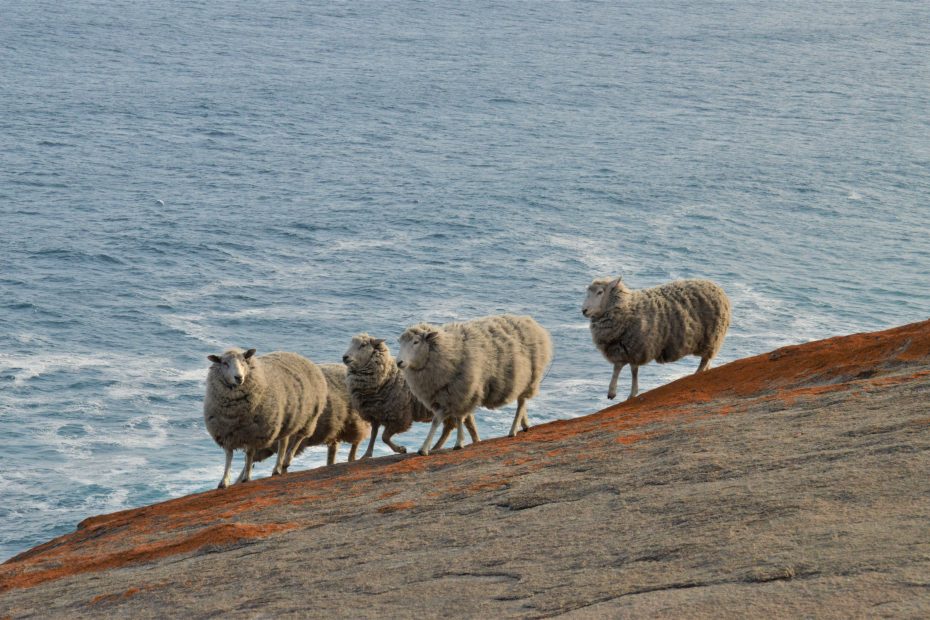Kangaroo Island, often nicknamed KI, is Australia’s third largest island after Tasmania and Melville Island. Located off the coast of South Australia, Kangaroo Island is a pristine natural paradise brimming with native wildlife, rugged landscapes, and stunning beaches.
Sometimes referred to as “Australia’s Galapagos”, the island is home to a vast array of unique flora and fauna found nowhere else, including the island’s iconic namesake animal, the kangaroo. With its abundant natural beauty and fascinating history, Kangaroo Island draws visitors from across the globe.
Kangaroo Island sits just 13 km from the mainland coast of South Australia. It is located southwest of Adelaide across the Backstairs Passage and west of the Fleurieu Peninsula. The island is accessible via ferry from Cape Jervis on the mainland.
Spanning 4,405 square km, Kangaroo Island is Australia’s third largest island. To put its size into perspective, the island is over 155 times larger than NYC’s Central Park. However, with just 4,500 residents, it is far from crowded.
The terrain consists of undulating hills and sandstone cliffs, with a spine of mountains running along the north coast. The highest peak is Mount McDonnell at 450 meters above sea level. The climate is Mediterranean, with mild winters and warm summers. Annual rainfall averages around 715 mm.
Remarkably, around 43% of Kangaroo Island is still covered in native bushland. The vegetation includes open forest, woodlands, heathlands, wetlands, and coastal dunes. Many plants are endemic to the island, like the velvety Kangaroo Island mallee ash.
Kangaroo Island is a refuge for wildlife rarely found on the mainland. It’s home to kangaroos, koalas, echidnas, platypuses, wallabies, possums, goannas, and over 250 bird species. Offshore waters harbor dolphins, whales, Fur seals, and Great white sharks. Sadly, some unique marsupials like the Kangaroo Island dunnart are now endangered.
Kangaroo Island was inhabited by the Ganay and Ngurunderi Indigenous groups for over 16,000 years before European settlement. They named the island Karta, meaning Island of the Dead. Tragically, the original inhabitants were all but wiped out from introduced disease and conflict with settlers.
Europeans first sighted the island in 1802. Permanent settlements didn’t emerge until the early 19th century after South Australia was colonized. Sealing, whaling, sheep farming, and logging became early industries. Today, tourism, fishing, honey production, and food/wine cultivation are the main economic activities.
The island has a laidback lifestyle with strong connections to nature. Local artisans produce handmade crafts, food, and beverages using the island’s natural bounty. There’s also a flourishing arts and music scene. The main township is Kingscote, established in 1836 as the first European settlement in South Australia.
Top attractions on KI include Seal Bay’s sea lion colony, Flinders Chase National Park, and the iconic Remarkable Rocks/Admirals Arch rock formations. Outdoor lovers can enjoy bushwalking, swimming, surfing, fishing, kayaking, and cycling. There are also several vineyard cellar doors to sample local wine.
Visitors can catch a 45-minute ferry from Cape Jervis to Penneshaw on KI. Alternatively, airlines offer direct flights to Kingscote Airport from Adelaide. Getting around requires a rental car or tour bus, as public transport is limited. A passenger train also does daily circuits between main towns.
Though rich in nature, Kangaroo Island faces conservation challenges. Bushfires, feral pests, and habitat loss threaten native flora and fauna. Climate change also endangers coastal vegetation and breeding grounds. Various recovery programs aim to protect endangered species and restore degraded land. Over one-third of the island lies within protected areas.
In summary, Kangaroo Island’s spectacular scenery, exotic wildlife encounters, unspoiled natural environments, and relaxed way of life make it a top ecotourism destination and nature lover’s paradise. Though not without its threats, active conservation efforts strive to preserve the island’s ecological wonders for generations to come. For a true Aussie nature experience, Kangaroo Island is a must-visit.
- Where is Kangaroo Island located?
Kangaroo Island is located off the coast of South Australia, southwest of Adelaide and west of the Fleurieu Peninsula. It sits just 13 km from the mainland.
- How big is Kangaroo Island?
Spanning 4,405 square km, Kangaroo Island is Australia’s third largest island after Tasmania and Melville Island. It’s over 155 times bigger than NYC’s Central Park.
- Why is Kangaroo Island called that?
Kangaroo Island was named by British explorer Matthew Flinders in 1802 due to the abundance of kangaroos spotted there. The island has a protected population of kangaroos.
- What is there to see and do on Kangaroo Island?
Top attractions include Seal Bay, Flinders Chase National Park, Remarkable Rocks, and Admirals Arch. Activities include bushwalking, swimming, cycling, kayaking, surfing, fishing, winery tours, and wildlife spotting.
- How do you get to Kangaroo Island?
Visitors can take a 45-minute ferry from Cape Jervis on the mainland to Penneshaw on KI. There are also direct flights available from Adelaide to Kingscote Airport on the island.
